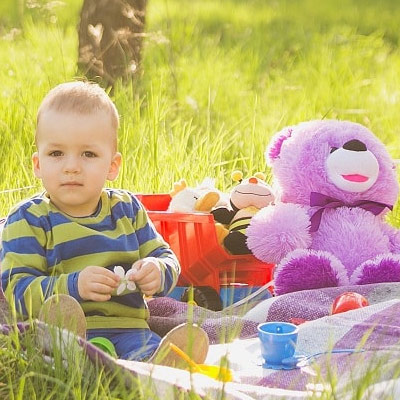 There is more to a child’s fears than just the scary things that happen during Halloween and monsters. What about fear of separation or the fear of animals? With young children scary things can leave a long-lasting impression. So, how do we deal with a child’s fears? Remember all children experience some fears as a natural part of growing up. When children are afraid they need support and reassurance. Here are some tips to help your child overcome his/her fears.
There is more to a child’s fears than just the scary things that happen during Halloween and monsters. What about fear of separation or the fear of animals? With young children scary things can leave a long-lasting impression. So, how do we deal with a child’s fears? Remember all children experience some fears as a natural part of growing up. When children are afraid they need support and reassurance. Here are some tips to help your child overcome his/her fears.
- Encourage children to talk about their fears. Communication and letting out the inner fear makes it less threatening and children will realize that they are not alone.
- Reassure children that they will not get hurt. Speak with confidence and say, “I am here to protect you. I will not let anything happen to you.”
- Be loving, caring, warm and friendly. Being held close can help, so hug and hold hands while you talk about their feelings.
- Be patient, as a child’s fears do not disappear overnight. It takes time and some fears may suddenly go away for a while but then reappear at a later time. Do not get discouraged and understand that you may need to repeat the same procedure and reassurances again and again.
- Don’t make fun of a child’s fear. The fear is very real to children, no matter how silly it may seem to adults. Telling children they shouldn’t have fears does not make it go away. Only time and positive experiences can do that. If the child is laughed at or rejected, the original fear will not go away but now a new fear of rejection and disapproval may arise.
- Never threaten children with punishment relating to their fears. Scaring a child can only create other problems and greater fears. Also don’t make children face things that they are not ready to face. For example don’t say, “Go near that big dog now and you’ll see he won’t hurt you.”
- Allow children to handle fears slowly with your encouragement and support. Help children to “do it for themselves,” so they can develop their own ability to deal with life. Introduce a feared object slowly and in parts when possible. For example, if a child is afraid of a dog, play with stuffed animals first, then maybe a puppy, before introducing a larger dog. For a child who is afraid of a dark room, hold hands, turn off the lights, and point out things that are well known to him.
- Teach realistic fears for the children’s own safety. There are real dangers in life, so we must warn children of things that could hurt them. Emphasize not to touch electric outlets, sharp knives, matches, or broken glass. Tell them to stay away from hot stove tops, bees, and strange animals and people.
Yes, there are fears in life, some that are necessary for protection and others that are more imaginative than we’d like. Work on dealing with your child’s fears using these tips together. However, if fears are becoming a threat to the child’s health, please seek advice from a trained counselor.










